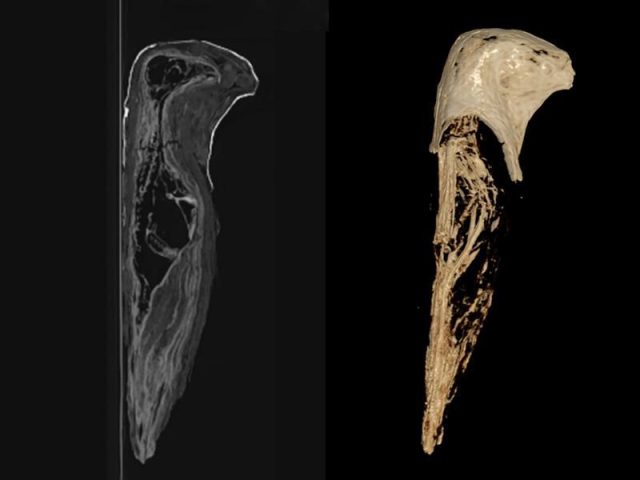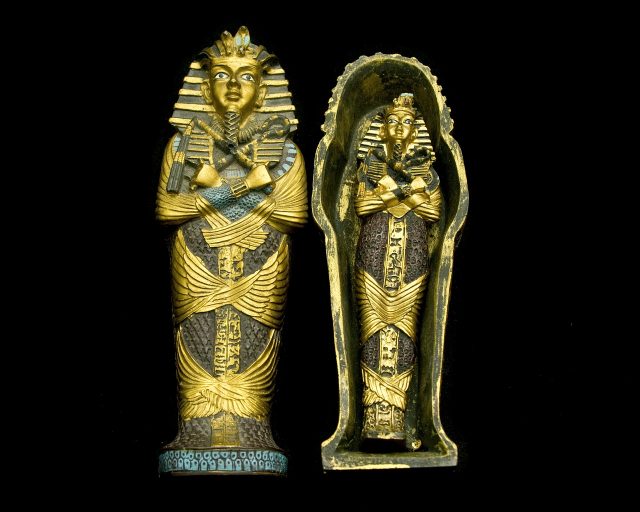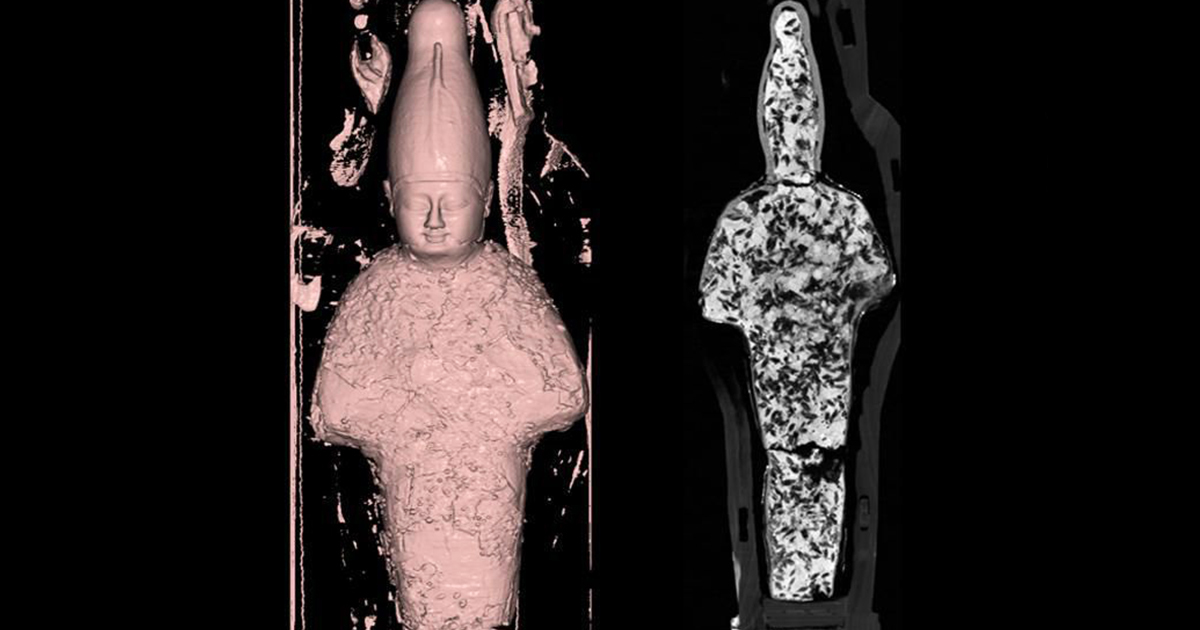Two miniature mummies at the Haifa Museum in Israel have revealed innards which are most definitely not human. When archaeologists and historians examine ancient Egyptian tombs, generally speaking they have a pretty good idea of what may rest within them. The Egyptians are renowned for the skill they had preserving the dead, and many a time a body is in startling good condition when the contents of a tomb are revealed.
But much to the surprise of the experts at the Haifa Museums, two small sarcophagi that recently underwent a kind of x-ray held not the human remains archaeologists anticipated. In fact, neither one contained any human remains at all — one held the skeleton of a bird, likely a falcon, while the other contained what in essence is just mud and grain. The latter was formed in such a way that it was intended to represent the god Osiris, the ancient Egyptian lord of the under world. The bird may have been meant to represent the god Horus.
The miniature mummies were taken to the Rambam Health Care Campus to undergo a computerized tomography (CT) scan, because experts from the museum were anxious to know, once and for all, just what the small mummies were. Marcia Javitt, the director of medical imaging, worked in conjunction with a team from the museum and was there when the scan took place. She said to the dailymail.com, “We could identify the shape, form and bones of what looked like a small bird. I wasn’t expecting that,” she said with wry understatement.

It was not unusual, explained Ron Hillel of the museum, for the Egyptians to bury their dead with a small animal — a cat, sometimes, or a bird. Birds were of great importance to them as a cultural symbol. The birds and animals were placed in the tombs so the dead would have someone to escort them to the afterlife. But for there to be the remains of a bird and no human skeleton or other remains is striking, he added.
Another unusual feature of the bird found is that it has only one leg, its right, and its neck is broken. Javitt suspects that injury occurred after death at some point, though she isn’t sure how or why it happened. The falcon, if indeed that is what kind of bird it is, is also missing some of its organs. The whole thing is odd, the museum staff say.

As for the other mummy, the one with the “mud pie” within it, the grains and soil were shaped like Osiris likely as a symbol of respect. Hillel, a museum staff member who is working with Javitt, said the mud and grains were shaped like a mummy to resemble human remains.
The bird mummy is just 10 inches long, while the grain mummy is approximately 18 inches long.
Although these new details make for an exciting addition to the miniature mummies’ “biographies,” in truth there is not a whole lot more the museum knows about their origins. The facility has had both of them for about 50 years, but doesn’t know much about where they came from or any other details of their past. That may change now as further examination of the remains gets underway, with both medical experts and museum staff working together to learn more.
Related Article: Mummy Sarcophagus Reveals 3,000-yr-old Painting of Egyptian Goddess
“We can be the anatomic detectives while they can be the archaeological ones,” Javitt told the dailymail.com. “We can put together an interesting story from that collaboration.” It will be an intriguing story no matter how it unfolds, thanks in large measure to these groups of experts coming together to track down how, and why, this bird, and this grain mummy, came to be at the museum, and what they represented to the people who buried them.
